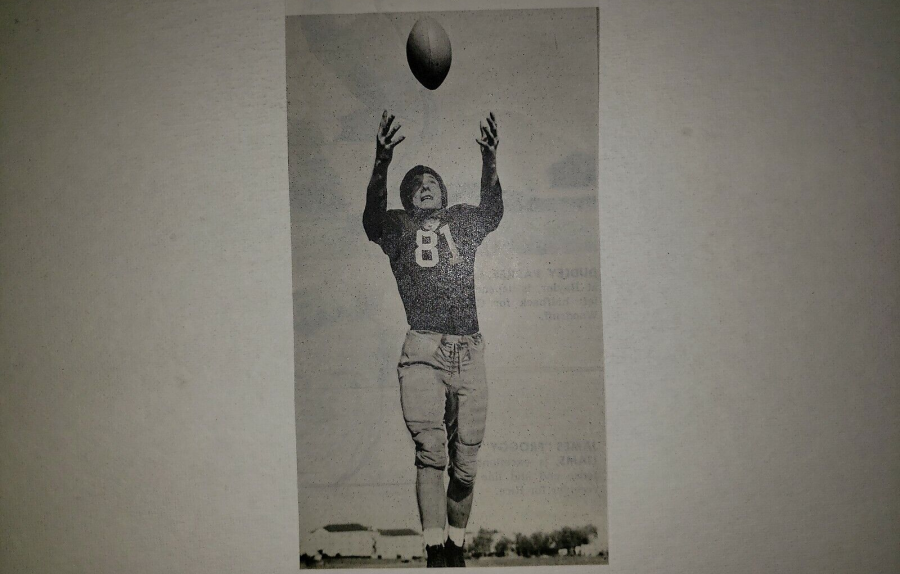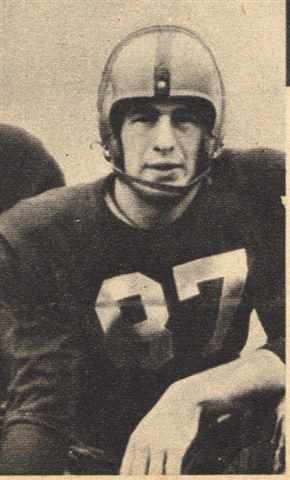Receiving Yards: The CFL's MIlestone Seasons
By Chris Lawton
The 2023 CFL season is firmly in the rear-view mirror now. Records have been added to, for both team and individual statistics as they are every year. While now the focus shifts forward to the 2024 Draft and coming season kicking off in summer.
We have been preparing for that with a bit of nostalgia on The Touchdown UK’s CFL pages recently. With articles covering milestone passing and rushing seasons in the history of the CFL. Now is the time to complete the trifecta of milestone offence base personal records with the milestone receiving seasons by yardage.
When In Time To Start
To be clear, I don’t mean every time the rushing yardage record was broken. Rather, each time a milestone was breached. Like the first recorded yardage leader. Or the first time someone ran for 900, 1,000, 1,110 yards season and so on in the CFL.
We need to remember that the CFL was only founded officially in 1958. Because of this, even though the Grey Cup has been contested since 1909, we have to start this list in the 1950’s. When dealing with players who played in the CFL we only get statistics dating back to 1950 for the WIFU (West) and 1954 for the IRFU (East). Which means we will start with a WIFU passer from 1950 and go from there. Which means we start in Edmonton.
1950: Morris Bailey

67 catches for 1,060 yards (15.8 yards per catch) & 4 touchdowns.
Bailey played a lone season in the CFL with Edmonton. However, because this was the first season records were kept, he will forever hold a place in the CFL record books.
Bailey led the West in receiving yards in 1950 and by virtue of that also is recognised as the first 1,000-yard receiver in the CFL record books. The 6’3” End out of Texas Christian was elected a West All-Star in his lone season with the green and gold. While at Texas Christian, according to Wikipedia he formed part of a duo nicknamed the “Berry-to-Bailey Battery.” This was alongside the CFL’s first 2,000-yard passer, Lindy Berry, who also set that mark in 1950.
1954: Al Pfeifer

68 catches for 1,142 yards (16.8 yards per catch) & 6 touchdowns.
Al Pfeifer was one of the top receivers in the CFL, mainly with Toronto, in the early to mid-1950s. Pfeifer joined the Argonauts in 1951,making 43 catches for 799 yards, but then missed all of 1952 and most of 1953 due to military service with the US in Korea. He did play in 5 games in 1953 but his first full season with the Double Blue was this one in 1954.
Pfeifer spent a total of five years with the Argos totalling 299 catches for 4,726 yards across 51 regular season games.
1955: Al Pfeifer
75 catches for 1,342 yards (17.9 yards per catch) & 15 touchdowns.
The former Fordham Ram, who had been recruited by Vince Lombardi to the Fordham cause, moved the CFL record on just one year later.
In 1955, Pfeifer not only led the East in receiving with 75 catches for 1,342 yards but was named to the East All-Star team having led the East in scoring with 15 touchdowns and 23 converts for 98 points (TDs were still 5 points in 1955). Pfeifer set a career high with 78 catches in 1956, though his yards dropped to only 993 yards.
He finished his career with a final year in the CFL with Ottawa where he had 44 catches for 700 yards.
Pfeifer was inducted into the Fordham Athletic Hall of Fame in 1989. He finished his time with Fordham with 95 catches, for 1,346 yards and 16 touchdowns. Which were all school records at the time. He would go on to be named to the Toronto Argonauts All-argonaut Team – modern Era (1945-1973).
1956: Hal Patterson

88 catches for 1,914 yards (21.8 yards per catch) & 12 touchdowns.
For the third consecutive year the receiving yardage milestone was extended in the CFL. This time however, Hal Patterson pushed it so far that it would not be surpassed again until 1983.
Patterson won the most outstanding player award in 1956 with Montreal, and set a team record of 11 separate 100-yard receiving games in a single (14 game) season that year. That record stood for over half a century. If he had played a 16, or 18 game season there is no doubt in my mind he would have put up 2000 yards receiving. Come to that he didn’t even play in the last game of the year! If he had he could perhaps even still hold the all-time yardage record off the back of his incredible 21.8 yards per catch.
Harold (Prince Hal) Patterson was a three-time CFL all-star who won three Grey Cups. He spent seven years with the Montreal Alouettes before starting a seven-year run with the Hamilton Tiger-Cats in 1961. He won the Grey Cup in 1963, 1965 and ’67.
During his days with the Alouettes, Patterson was a favourite target of one of the great CFL pivots, Sam (The Rifle) Etcheverry. Patterson finished his career with 460 receptions for 9,473 yards and 75 TD’s – an incredible 20.6-yard per catch average.
He also made his mark on the D too. Recording 27 interceptions in his first six seasons. Including 8 in his rookie season and 7 in 1955 which led the East. Hal Patterson was elected to the Canadian Football Hall of Fame in 1971.
1983: Terry Greer

113 catches for 2,003 yards (17.7 yards per catch) & 8 touchdowns.
Greer played only six seasons in the CFL but her certainly made his mark. This 1983 season where he had 2,003 yards receiving broke Patterson’s long-standing league record. Not to mention being the CFL’s first 2000 yard receiving season coming in a 16-game schedule. In fact, Greer was a key cog in the Argonauts’ Grey Cup winning team in 1983, giving the team & fans their first championship since 1952.
From 1982 to 1985 Greer led the CFL with 404 receptions for 6,817 yards, an average of 16.8 yards per catch and 47 touchdown catches. This coming off the back of 4 consecutive 1,000 yards receiving seasons.
Greer went on to play in the NFL. From that time, he has two Super Bowl rings to add to his Grey Cup ring.
Terry Greer was elected to the Canadian Football Hall of Fame in 2019.
1994: Allen Pitts

126 catches for 2,036 yards (16.2 yards per catch) & 21 touchdowns.
Allen Pitts had his best season in 1994, with the Calgary Stampeders, recording his one 2,000 yards receiving season. His catches, yards and TDs for this season were all career highs. But only one of four seasons that he made 100+ receptions. At the time the receptions and TD totals were league records.
Pitts retired as the all-time receiving leader in yards with 14,487 yards. This has since been surpassed but we cannot overlook Pitts’ consistency. Through 176 regular season games, Pitts averaged 15.4 yards per reception. Arguably, Allen Pitts never had a bad year. In his 11 season CFL career, Pitts had over 1,000 yards receiving 9 times, missing twice only because of injuries.
Some of his league records may have been surpassed, but the highest volume 2000 yard receiving season is not one of them. As well as this Pitts still holds various Stampeder team records, is on the Stampeder Wall of Fame and had his number 18 jersey retired.
He was twice nominated as the Stampeders Most Outstanding Player and was a six time CFL All-Star.
Allen Pitts was elected to the Canadian Football Hall of Fame in 2006

CHRIS LAWTON
CFL ANALYST
Chris originally started following the NFL with the ‘first wave’ of fans when it was shown on Channel 4 in the 1980’s. He has been a keen supporter of the Miami Dolphins since 1983. Chris first encountered the CFL in 2016 and instantly fell in love with the Canadian game. He has been writing about the CFL 2017. Chris has a degree in history, postgraduate degree in librarianship and can be found on twitter as @CFLfanUK
